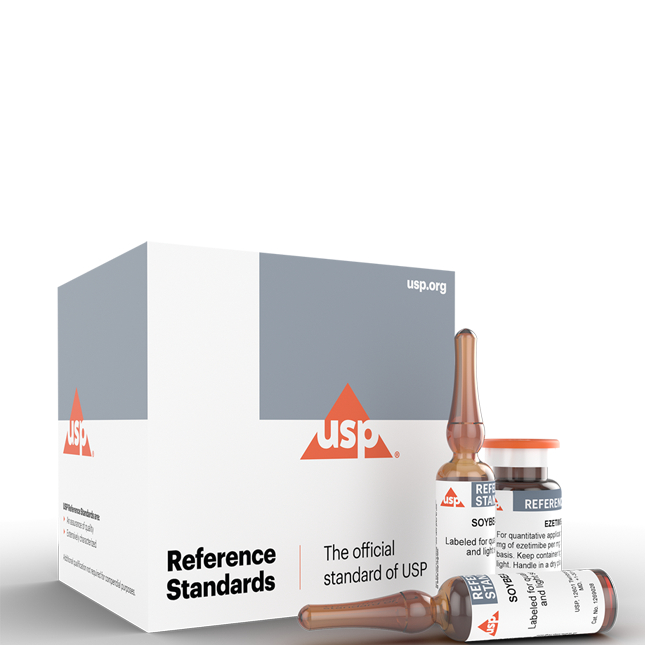

Identify a need for a new chemical medicines standard
- To start the process, drug manufacturers or our USP staff members identify the need for a documentary standard – such as a general chapter or monograph – and a Reference Standard to support the same.
- Generally, manufacturers provide us with their specifications, validated analytical procedures and other supporting data in order to ensure that both the proposed monograph and Reference Standard candidate meet industry needs.
Prepare proposed monograph
- USP scientists work with engaged industry partners and the responsible Expert Committee to develop a proposal for use as the public standard. During proposal development, scientists in USP’s laboratories may evaluate one or more procedures being proposed. USP’s ultimate goal is to publish a proposal with suitable methods and criteria to ensure quality.
- During proposal development, scientists in USP’s laboratories may evaluate one or more procedures being proposed.
Procure Reference Standard candidate materials
- Manufacturers may be asked to provide physical materials for analytical procedures in order for the material to be considered for future use as a USP Reference Standard, supporting monographs.
Evaluate Reference Standard candidate
- Using multiple USP or USP-approved labs worldwide, we test the candidate materials. We test the Reference Standard candidate based on analytical procedures in the monograph, as well as “as well as other techniques to rigorously characterize the materials.
- Our scientific liaisons review the lab results to determine candidate suitability as a USP Reference Standard.
Review and approve Reference Standard candidate
- When the in-house scientific liaisons find the candidate suitable based on lab testing, they document the results of the laboratory testing undertaken to characterize the materials and evaluate it suitability as a USP Reference Standard which is reviewed internally.
- If approved internally, the in-house scientific liaisons then submit the Reference Standard evaluation package to the Expert Committee along with the monograph.
- If the Expert Committee approves the Reference Standard evaluation package and monograph and the bulk materials are ready, the process moves to the public comment period.
Public comment period
- We post the proposed monograph online in the Pharmacopeial Forum and open it for public review for 90 days. By providing this time for public review — and similarly by opening Expert Committee meetings to the public — we ensure our review process is robust and transparent and collaborative.
- At the end of the comment period, all comments on the proposed monograph are sent to the Expert Committee.
- Concurrent with the monograph development and publication/comment period, we develop the Reference Standard information (including label text, packaging, post-packaging QC and QA review) that will be needed by manufacturers to meet compliance requirements.
Collate and consolidate feedback
- Our USP scientific liaisons review all the public comments, organize the information received and provide science-based recommendations to the Expert Committee. This review allows the members to focus on the proposed monograph and Reference Standard uses objectively and issue a final opinion.
Approve monograph and Reference Standard uses
- Expert Committees review and approve the monograph and the associated official uses of USP Reference Standard. After Expert Committee approval, the monograph is published in USP-NF.
- The monograph typically becomes effective six months following publication, during which time pharmaceutical companies must prepare for the implementation of the standard.



